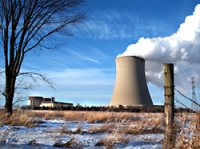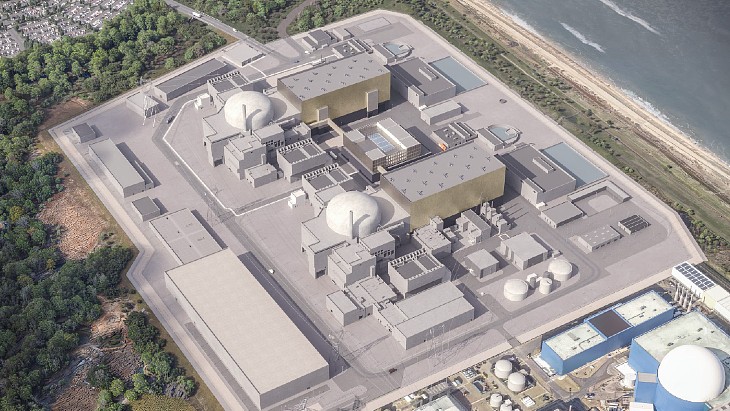Automatic safety systems including diesel backup generators worked smoothly to ensure that Exelon's Byron plant remained safe and stable despite a loss of offsite power.
 |
| Exelon's Byron plant (Image: NRC) |
The operator declared an 'unusual event' - the lowest level in the US Nuclear Regulatory Commission (NRC) emergency classification system - at Byron unit 2 at 10.18 am on 30 January. The loss of power was caused by a fault in a transformer in the station's switchyard, which disconnected it from the grid and triggered the 1105 MWe pressurized water reactor to automatically shut down. The plant's emergency diesel generators started up and operated as designed, providing power to plant equipment.
In normal operation a nuclear plant is self-sufficient in the power it needs to keep itself running safely, but even when the plant shuts down power is still needed to run safety-critical systems such as coolant pumps and electronic controls. This power would usually be drawn from the grid, backed up by emergency diesel generators to guarantee a power supply should offsite power be lost for any reason.
Steam was released from the non-nuclear side of the plant as part of the depressurizing and cooling process, as per the design of the plant's safety systems. Exelon noted that the steam contained "expected" amounts of tritium, although the NRC, which regulates such releases, emphasised that the steam did not present any threat to the public.
The NRC is monitoring the situation at the Illinois plant, while plant officials are investigating the equipment failure that triggered the power loss. Byron unit 1 was unaffected and continues to operate at full power.
Researched and written
by World Nuclear News




_55530.jpg)
_42372.jpg)
_37521_70699.jpg)

_76087_55556.jpg)




